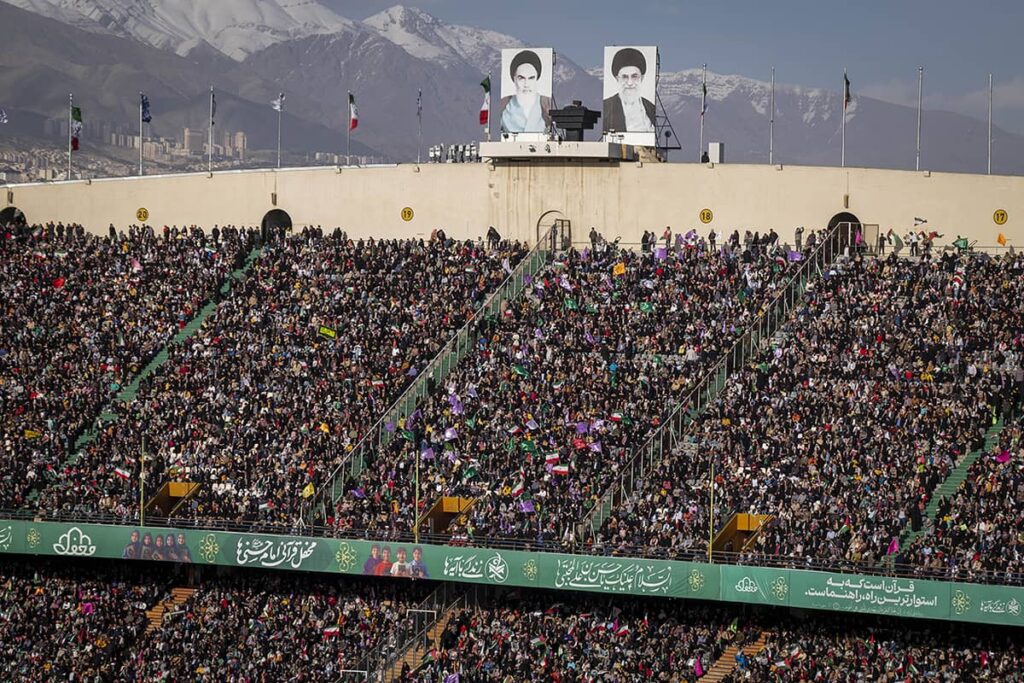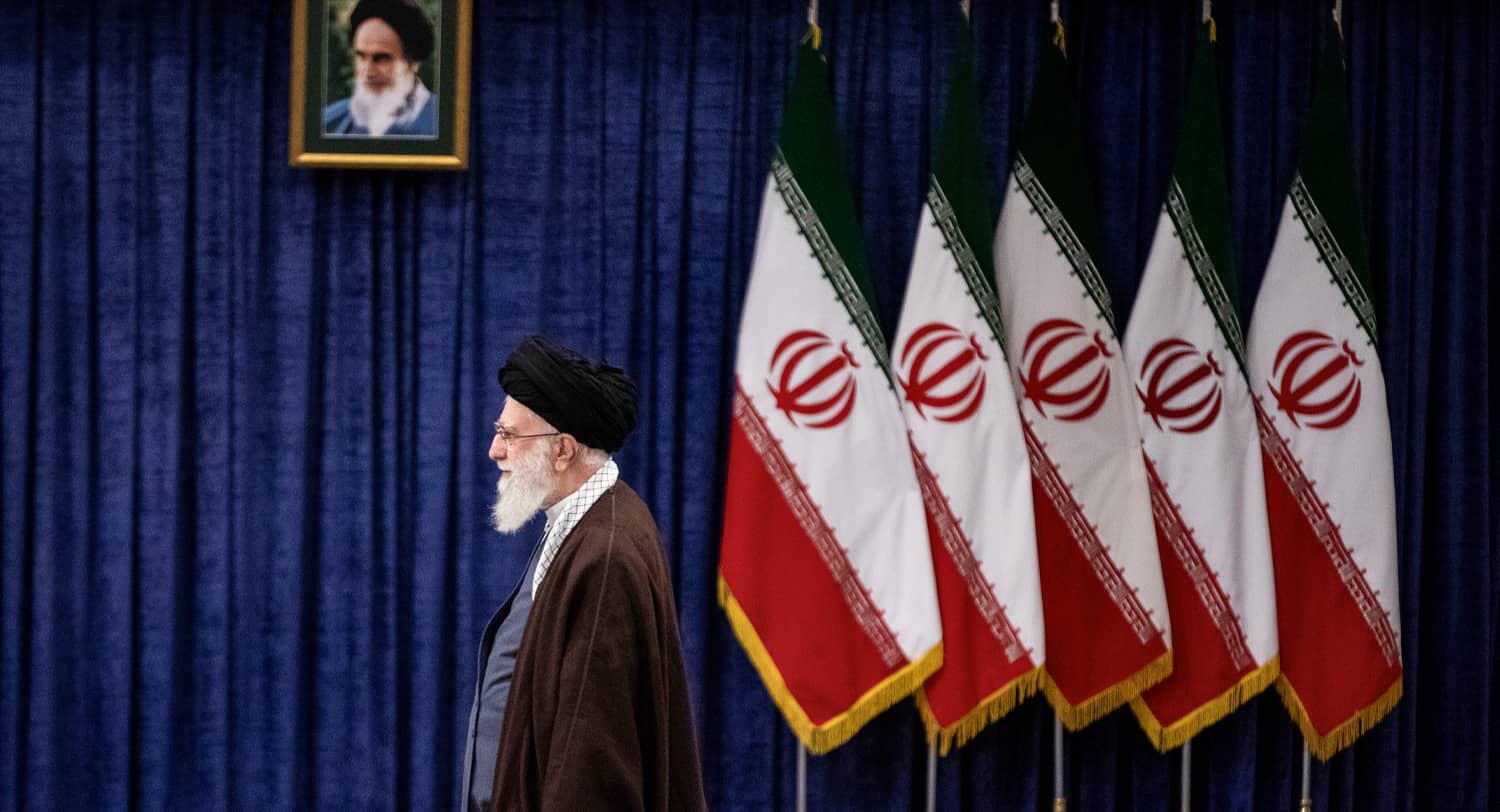On February 1, 1979 when Ayatollah Khomeini debarked at Mehrabad airport in Tehran, he was asked what form of government he envisioned for post-Shah Iran. He said, “an Islamic Republic, not one word more or one word less.”
Today, as Iran draws closer to the eventual passing of Khomeini’s successor, it is worth focusing on the gradual changes within the country that have brought us to a point where the Islamic Republic has become something quite different. The ‘Ship of Theseus’ paradox probes the nature of identity, asking when something that replaces more and more of itself progressively over time essentially changes into something else. It is worth asking the same about the Islamic Republic of Iran.
From Islamic to Nationalist
Let’s start with the ‘Islamic’ part. When Khomeini returned to Iran, he and his followers methodically purged the opposition’s leadership of the various non-clerical factions that had contributed to driving out the Shah, including nationalists, socialists and communists. His followers ensured the principle of ‘Velayat-e Faqih’ – the ‘Guardianship of the Jurist’ – was enshrined in the new constitution, codifying the collective power of the clerical class and the individual power of the Supreme Leader.
At first, Iran’s strategic interests were defined largely in terms of Islam. There is the famous (possibly apocryphal) story of Khomeni being asked by reporters, as he descended from the plane in 1979, what he felt upon returning to his homeland after fifteen years of exile. “Nothing,” he responded, indicating that for him Iranian soil held no special attraction. For Khomeini, Iran was a beachhead for Islam’s global spread, as he proclaimed, “We shall export our revolution to the whole world. Until the cry of ‘There is no god but Allah’ resounds over the whole world, there will be struggle.”
Over time the collective power of the clerical class has attenuated. Nowhere is this more clearly seen than in the Majlis (parliament). Over 50 percent of Iran’s first two parliaments were clerics, but in the last 24 years and last six parliaments, clerical representation has been consistently below 15 percent.
Islam’s global spread has also lost its luster as a policy priority. Although Iran is careful to portray its activities in an Islamic patina, its foreign policy has reverted to an essentially nationalist one, seeking the same regional hegemony that motivated Iran’s previous dynasties. The late Islamic Revolutionary Guard Corps (IRGC) General Qassem Soleimani was popular as a nationalist figure, not because of any putative defense of Islam.

From Republican to Authoritarian
As for the ‘republic’ part, there has been a marked shift in political power from elected positions (‘entekhabi’) to appointed ones (‘entesabi’). Supreme Leader Khamenei accelerated this shift in reaction to the presidency of Mohammad Khatami (1997-2005). His surprise victory, and the election of the solidly pro-reform Majlis two years later, convinced Khamenei to do whatever was necessary to prevent the people’s will from being translated into (rival) political power.
Khamenei’s tool to this end was the Council of Guardians, an appointed body whose six clerics and six jurists are all either directly or indirectly appointed by the Supreme Leader. This council is charged both with vetting Majlis legislation to ensure it is consistent with Islamic law and the Constitution, and with vetting candidates for elective offices.
Post-Khatami, screening became increasingly stringent, with each candidate required to prove his ‘demonstrated fealty to Islam, the system and the Velayat-e Faqih.’ The increasingly narrow spectrum of approved candidates resulted in a progressive loss of popular enthusiasm for voting. Turnout in presidential elections tumbled from a high of almost 80 percent for Khatami in 1997 to a low of under 50 percent for Raisi in 2021. Similarly, Majlis election turnout plummeted from a peak of over 70 percent with the sixth (reformist) Majlis of 1996 to a historic low of approximately 40 percent in the twelfth Majlis elections of 2024.
Ever Rightward
In the Islamic Republic’s early years there were two main political camps, the conservative Tehran Militant Clergy Association and the leftist Militant Clerics Association. Khomeini never sided decisively with one faction over the other, although especially in his final days his heart seemed to be more with the leftists [Note: For insight into factional politics in its beginning, see the late Mehrdad Moslehi’s ‘Factional Politics in Post-Khomeini Iran.’]
After Khomeini’s 1989 death and Khatami’s 1997 surprise election victory, Supreme Leader Khamenei’s efforts to purge the leftists (known as ‘reformists’ since the Khatami election) from the political system has been largely successful, and as a result the political center of gravity has continued to shift to the right.
For example, without changing any of his positions, former conservative Majlis Speaker (from 2008-2020) Ali Larijani has moved from becoming a regime insider to outsider, and was banned from competing in the 2021 Presidential election by the Guardian Council. The shrinking circle of approved elites, and its rightward march on the political spectrum, accounts for the record low turnout of the 2024 Malis election, which offered an indifferent public a choice between different flavors of ultra-hardline conservatives.

Commitment Over Competence
Concomitant with the shrinking of Iran’s political spectrum is another long-term dynamic, ‘commitment over competence’ (‘ta’ahod bar takhasos’). President Rafsanjani’s nickname – the ‘General of Reconstruction’ (‘Sardar-e Sazandegi’) – referred to his leadership of an army of technocrats, mobilized to rebuild Iran after the eight-year war with Iraq. The bureaucracy he installed stayed largely intact during the Khatami presidency. Indeed while Khatami’s attempts at political reform were all stymied, his record of economic reforms was fairly strong.
Following Khatami, President Ahmadinejad rooted out the ‘deep state’ in favor of patronage aiming to attract IRGC political support. The resulting incompetence and corruption, combined with effective international sanctions levied against Iran owing to its nuclear program, led to serious economic problems. Khamenei allowed the partial and temporary ‘return of the technocrats’ under Rafsanjani disciple Hassan Rouhani, who had a mandate of salvaging the economy and getting sanctions lifted. Once President Rouhani had carried out the Supreme Leader’s will, he too was effectively put in a box. With President Raisi’s 2021 election, the usual cabal of conservative apparatchiks were once again in key positions.
Today, the IRGC is both the main tool of Khamenei’s rule and the main beneficiary of his considerable largesse. The IRGC got its original ‘growth spurt’ after the 1988 iran-Iraq War ceasefire from then-President Rafsanjani. But it has been Khamenei who has expanded IRGC economic fiefdoms and increasingly relied on it for security and stability, to the point where the IRGC is the single most important institution in Iran today.
Conclusion
Iran’s ship of state has replaced many if not most of its parts since it set sail in 1979. Calling it an ‘Islamic Republic’ or an ‘Islamic theocracy’ now is a serious misnomer: while it still uses increasingly threadbare Islamic tropes to portray its actions, it has become an authoritarian, nationalist state ruled by a military-security elite.
Although most of the original parts of Iran’s revolutionary ship of state have been swapped out, it still has Khamenei’s hand on the rudder. An absolutist Khamenei, fearing regime change above all else, has seen any type of opposition as a fifth column, any calls for reform as a thin wedge, and any type of outreach by the West as a Trojan horse. After Khamenei’s death, it is by no means a given that Iran’s post-Khamenei leaders, whether IRGC or otherwise, will necessarily share this worldview.
Ayatollah Khomeini said he was forced to drink ‘a poisoned chalice’ in accepting the 1988 cease-fire with Iraq, and during the 2015 nuclear negotiations Ayatollah Khamenei cited the need for ‘heroic flexibility.’ We can’t foresee what Iran’s post-Khamenei leadership will be, much less whether it will continue the policies of a ‘rejectionist’ state. But as Arash Azizi recently noted, after a leadership change Iranians will have a rare opportunity to redefine Iran in a way more congruent with the considerable geopolitical forces pressing down on it.

